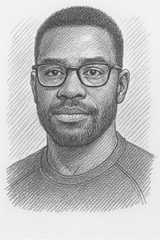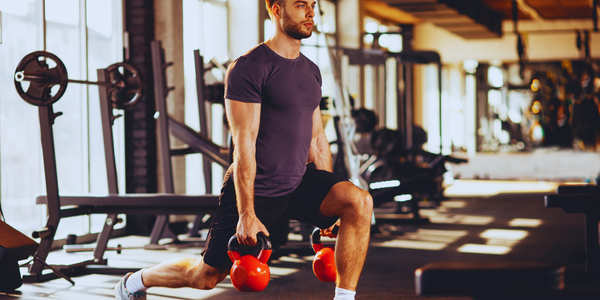How Was the Workout? Let Me Ask My Smart Socks
Smart socks and wearable fitness tech help you optimize your workouts. Gain insights into your performance and progress with the latest innovations in smart clothing.

One-third of new runners get hurt in their first year, a study found. This shows how key proper training and gear are. Now, with smart clothes and tech, you can track your workout and get tips to do better. For example, fitness tracking socks can show how you strike your feet, your stride, and more.
Smart clothes, like smart socks, are getting more popular. They track your fitness, like how long you stride and where your feet land. The Sensoria smart sock, for $149, gives you lots of stats on your runs.
https://www.youtube.com/watch?v=5t_24MjjzuQ
Looking into smart clothes and tech, you'll find many options. From socks to pants and shirts, they track muscle activity, heart rate, and breathing. They're great for anyone wanting to get better at fitness.
Key Takeaways
- Smart clothing and wearable tech can track a wide range of fitness metrics, including stride length, cadence, and foot positioning.
- The Sensoria smart sock is a prime example of this technology, providing users with detailed statistics on their running performance.
- Smart clothing can help prevent injuries by providing valuable insights into your technique and performance.
- Wearable tech is evolving rapidly, with new devices and technologies emerging all the time.
- Smart clothing is not just for athletes, but can be used by anyone looking to improve their fitness and overall health.
- When choosing smart clothing, consider the type of activity you'll be doing and the metrics you want to track.
Understanding Smart Clothing and Wearable Tech Innovation
Exploring smart clothing opens up a world of new tech. It changes how we track our health and fitness. Smart clothes use sensors and Bluetooth to track things like how far you walk and how fast.
These devices give us insights to improve our workouts. They help us understand our bodies better.
Smart clothes do more than track fitness. They can also monitor health, like vital signs. For example, smart socks can spot inflammation early. Biosensors in sports bras track pulse and breathing.
The smart clothing market is growing fast. It's expected to jump from 1.7 million units in 2016 to 26.9 million by 2022. This shows smart clothes are here to stay.
Some smart clothes and their features include:
- Athos smart clothing: measures biometric data including heart rate, calorie expenditure, and muscle activity during workouts
- Hexoskin smart clothing: tracks biometrics such as heart rate, breathing, and sleep efficiency
- Wearable X yoga pants: uses sensors to provide vibrational feedback for posture correction
The wearable tech market is booming. It's expected to hit 6.5 billion USD by 2027. The future of smart clothes looks bright, with new tech and sustainable materials on the horizon.
The Revolution of Fitness Tracking Through Smart Clothing
The global smart clothing market is booming, expected to hit $4.45 billion by 2022. Activity monitoring wearables are getting more popular. Brands like Athos and Sensoria are at the forefront, offering stylish yet functional fitness tracking.
Athos tracks muscle activity, heart rate, and more, all while looking good. Sensoria's running gear tracks your pace, foot landing, and cadence. These brands show how smart clothing can enhance your workout.
But smart clothing does more than just track fitness. It's also being explored for monitoring chronic conditions like diabetes and heart disease. For instance, Hexoskin's smart shirt tracks your heart rate, breathing, and activity. To stay updated on smart clothing, check out active man fitness tech websites.
Smart clothing offers many benefits. Here are a few:
- Real-time feedback on workout intensity and form
- Personalized coaching and guidance
- Tracking of vital signs and health metrics
As technology advances, we'll see more cool uses for smart clothing and wearables in fitness. These devices can help you optimize your workouts, improve your technique, and lower injury risks.
Conclusion: Stepping into the Future of Connected Fitness
The wearable tech industry is booming, with a 15.5% growth rate from 2023 to 2030. We'll see more smart clothes and data-driven activewear in fitness. This is because people want more from their workout gear.
Smart socks, like those from Sensoria, track your foot steps and more. They help athletes improve their workouts and avoid injuries. Smart clothes let us monitor our heart rate and track our activities in real-time.
Big names like Fitbit, Nike, and Under Armour are leading the way. They're adding sensors and data to their sportswear. As tech gets better, we'll see even more cool uses of smart clothes in fitness. This makes data-driven activewear key for our fitness goals.
FAQ
What are smart socks and how do they work?
Smart socks are high-tech devices that track your fitness. They use sensors to monitor your stride, cadence, and foot position. This gives you insights into your workouts and helps you improve your performance.
What are the benefits of using smart socks and wearable fitness technology?
Smart socks and wearable tech offer many benefits. They provide personalized coaching, improve your technique, and lower injury risk. They also help you stay fit and healthy, making them great for tracking your fitness journey.
How do smart clothing and wearable devices track fitness metrics?
Smart clothing and devices use sensors and microelectronics. They also use Bluetooth to track your fitness. This includes metrics like stride length, cadence, and foot positioning, giving you valuable workout insights.
Can smart socks and wearable fitness technology be used for health monitoring?
Yes, they can. Smart socks and wearable tech can monitor vital signs and detect health issues. They are a valuable tool for keeping an eye on your health and wellness.
How will smart clothing and wearable devices change the fitness industry?
Smart clothing and devices will revolutionize fitness. They offer personalized coaching and feedback. They help you track your progress and optimize your workouts. This makes them key players in the future of fitness.
What types of fitness metrics can smart socks and wearable devices track?
They can track many fitness metrics. This includes stride length, cadence, and foot positioning. They provide a detailed understanding of your workouts, helping you improve your performance.
Are smart socks and wearable fitness technology suitable for all fitness levels?
Yes, they are. Smart socks and wearable tech are for everyone, from athletes to beginners. They offer personalized coaching and feedback to help you reach your fitness goals.
👉 Join the Active Man Community
Get expert tips, workout guides, nutrition hacks, and the latest trends delivered straight to your inbox every week. No spam — just actionable insights to help you live stronger, healthier, and better.





